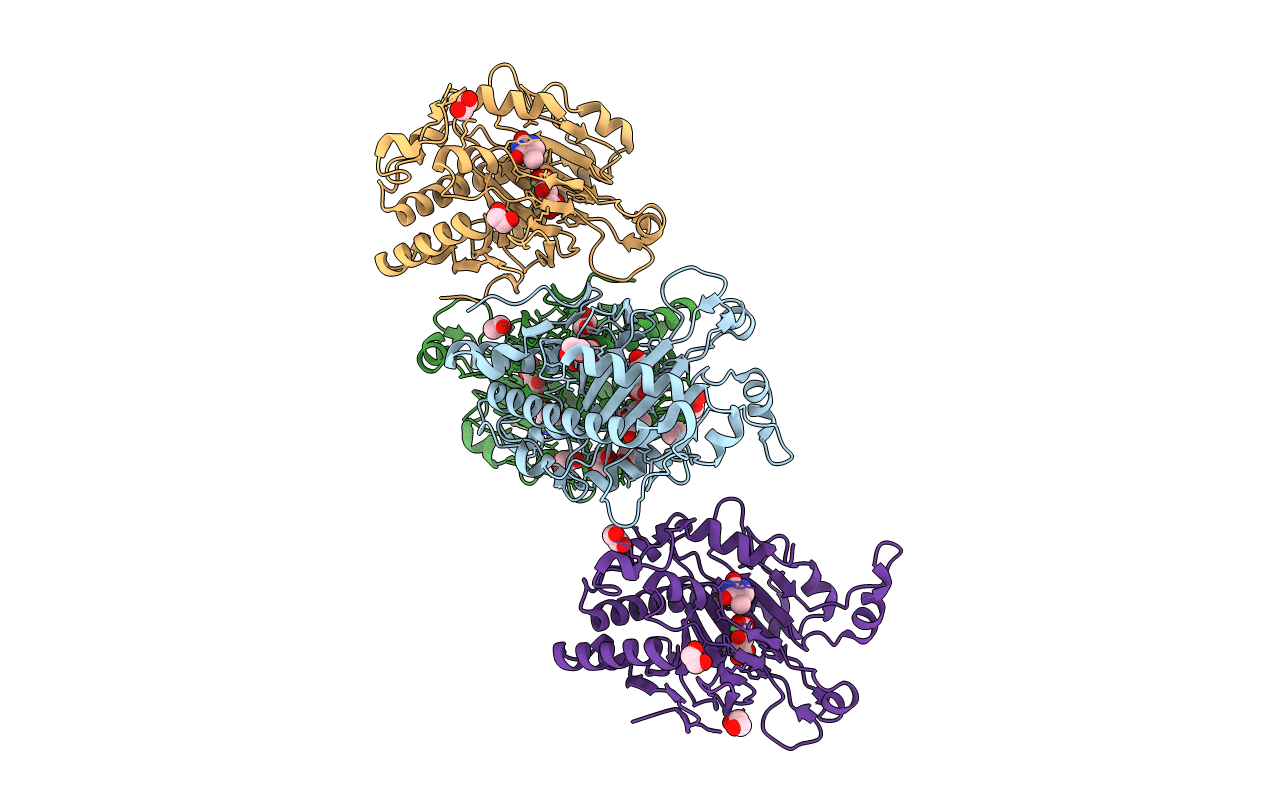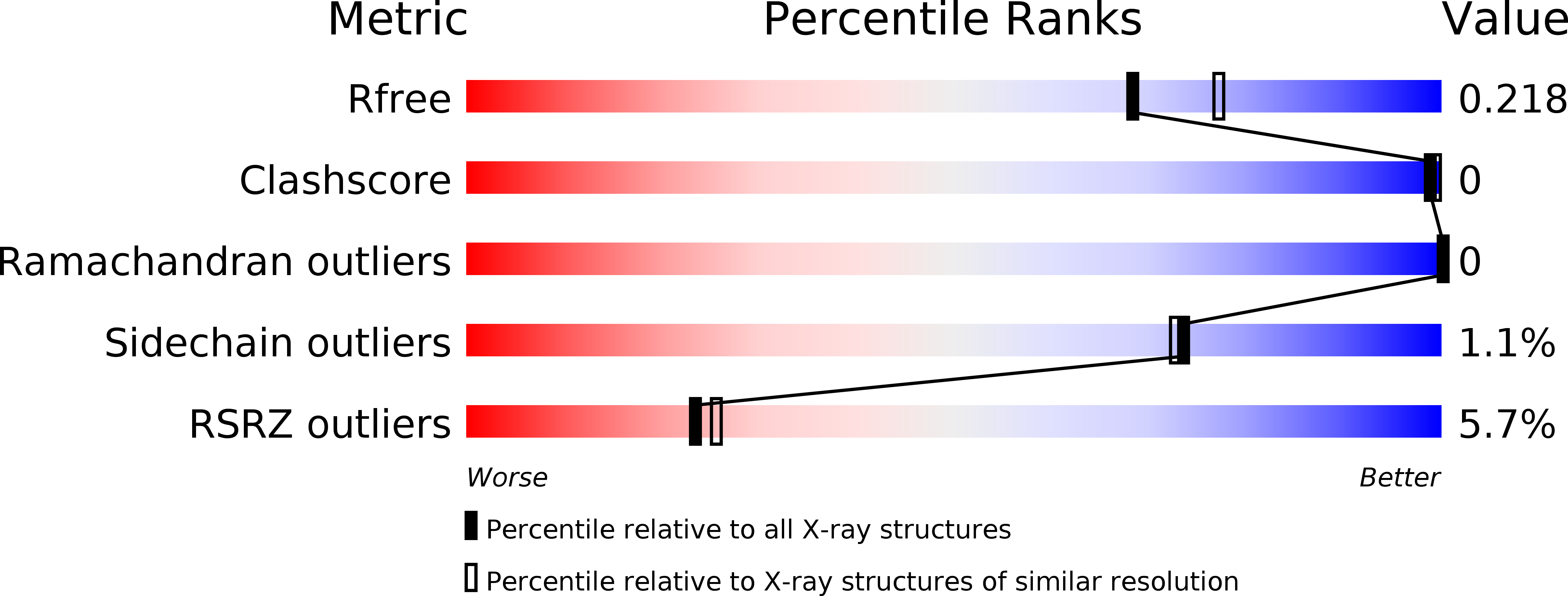
Deposition Date
2015-06-17
Release Date
2015-10-21
Last Version Date
2023-11-08
Entry Detail
PDB ID:
5C3Q
Keywords:
Title:
Crystal structure of the full-length Neurospora crassa T7H in complex with alpha-KG and thymine (T)
Biological Source:
Source Organism:
Neurospora crassa (Taxon ID: 5141)
Host Organism:
Method Details:
Experimental Method:
Resolution:
2.05 Å
R-Value Free:
0.21
R-Value Work:
0.18
R-Value Observed:
0.18
Space Group:
P 1 21 1


